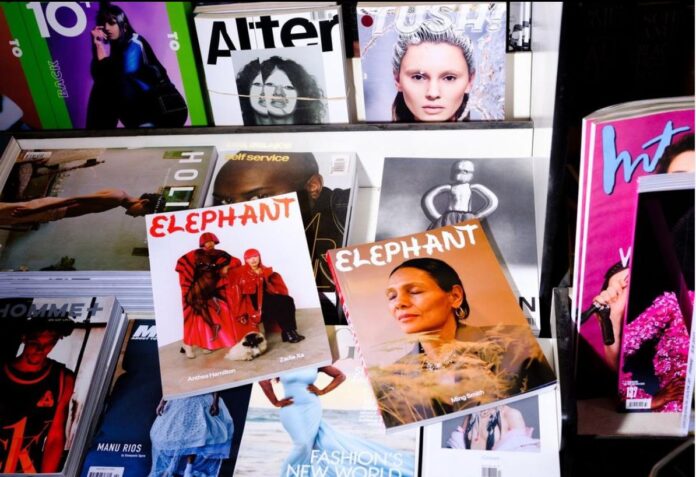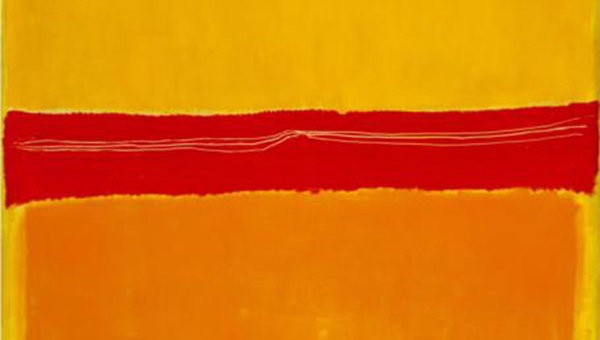The British art magazine Elephant will cease publication at the end of this month after its publisher Colart International Holdings Limited pulled the title’s funding, citing the current economic crisis and a downturn in global sales of art supplies.
Colart purchased Elephant in May 2017 but will no longer fund the print and digital magazine. With no other funding available, the magazine is set to fold at the end of October unless a new owner is found.
“Colart is actively in conversation with several parties about taking over the magazine,” says Karen Spinner, Colart’s commercial director.
“This is an incredibly sad moment for Elephant and a painful process for the entire team to endure,” Spinner says. “The magazine has been a true champion for fresh and underrepresented talent in the art world, thanks largely to the efforts of our stellar editorial team. I very much hope that, in due course, we can find a new home for Elephant to thrive in.”
The closure comes after years of turbulence for the magazine, which has changed hands on a number of occasions and pivoted into a series of commercial ventures with varying levels of success.
Colart is a major distributor of art supplies and materials. Headquartered in London, the company employs more than 1,500 people in 16 countries and owns subsidiaries and brands such as Liquitex and Winsor & Newton.
Elephant was founded in 2009 by Marc Valli, co-founder of the art book and print shop Magma, which has stores in London’s Covent Garden and Clerkenwell as well as Manchester’s Northern Quarter. Valli acted as editor-in-chief and publisher of the magazine and actively trying to position it as an insurgent and maverick title in the field of British art publishing.
The name of the magazine itself is a reference to tackling the apparent ‘elephant in the room’ of contemporary art culture. Valli is now the director of Laurence King Publishing, who briefly took ownership of Elephant in 2016 but sold a 75% stake to Colart in May 2017.
“Elephant is not a specialist art magazine, but tries to look at our visual art landscape as a whole, avoiding labels such as contemporary art or commercial art,” Valli said in a 2013 interview. “It looks at, for example, the connections between art photography and fashion photography, or how artists will collaborate with graphic designers.”
The first issue of Elephant’s print magazine hit shelves in December 2009. It was published by Frame Publishers, who also publish the interiors magazine Frame, and included editorial on fashion, travel and graphic design.
But the pilot magazine also gave prominent space to outliers and little known names from the world of contemporary art. Artists who had not received mainstream and establishment attention would remain the focus of the magazine for the next decade.
In the early years, Elephant was run by a staff of two, and operated from the basement of the Clerkenwell branch of Magma. This setting informed the magazine’s DIY, gung-ho approach. With its playful, youthful approach to art criticism and emphasis on new, young and emerging artists, the magazine attempted to puncture the elitism of the art world. It aimed for a fun, energetic and often frivolous tone. The millennial demographic was the magazine’s stated target audience.
Elephant was also a leader in the digital sphere for art editorial. It founded its digital platform in 2015, before many other printed art publications adopted a digital first policy. The magazine’s website and social channels became the engine of Elephant’s socially-engaged and inclusive content, which regularly dissected issues around race, class and gender.
The magazine grew to become a large format biannual publication, with a relaunch in 2021 featuring a design by the graphic designer Tom Joyes, who became the magazine’s art director. The final iteration of the magazine, the Autumn/Winter 2022 issue, was released in September 2022 and features artists Anthea Hamilton, Zadie Xa and Ming Smith on its numerous covers. The magazine promoted a message of a ‘hopeful future’.
But behind the scenes the picture was less optimistic. Elephant’s founding principles and identity struggled to mesh with the ambitions of Colart, a large international supplier of art materials who attempted to pivot the Elephant brand away from the notoriously difficult magazine industry and expand into other more profitable and corporate ventures.
As part of the investment driven by Colart, in November 2018 Elephant evolved into a physical space: a cavernous cafe, bar and gallery on the site of a former petrol station in White City, West London, titled Elephant West and designed by architects Liddicoat and Goldhill.
Elephant West was envisioned as a ‘hub for the West London arts community’, Colart said in promotional materials at the time. The space eventually closed during lockdown. But with various management issues unfolding in the background, it never reopened to the public after the pandemic leavened. It now serves as offices and a packing centre for Elephant Kiosk, an online art supply retailer.
Elephant Kiosk was one of two initiatives Colart launched during the pandemic under the leadership of Spinner, who previously worked as managing editor at Horse & Hound magazine, and was appointed as the Commercial Director of Elephant Art in 2020.
In an attempt to diversify Elephant’s offerings, the organisation also launched Elephant Academy, offering online art classes and workshops. Last year, Elephant also launched its own range of sustainably-packaged paint.
A series of staff departures foreshadowed Elephant’s end. The magazine’s creative director, Robert Shore, left the company in 2020 but was never replaced. The editor Emily Steer, who joined the company in 2015, initially as deputy editor, resigned and left the magazine in September 2022. Colart announced Elephant’s closure internally soon after.
The end of Elephant is a familiar tale of a once independent-minded art magazine whose creativity and ambition was left scorched by corporate thinking. Its departure punches another dent in a British art publishing scene in which few autonomous voices are able to thrive.
• Charlotte Jansen is a former commissioning editor of Elephant magazine

























